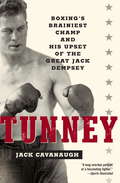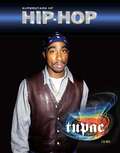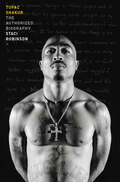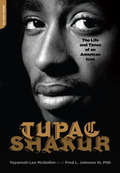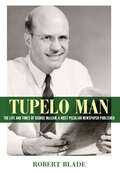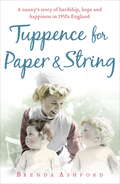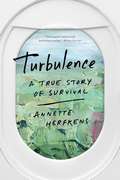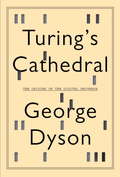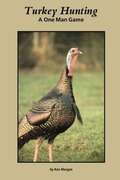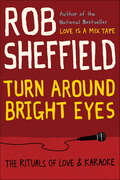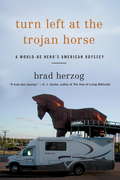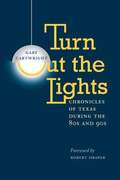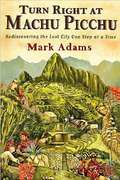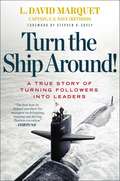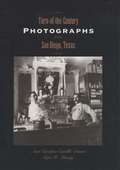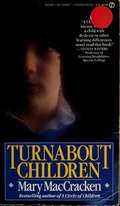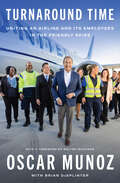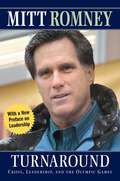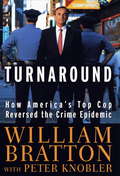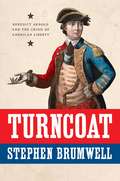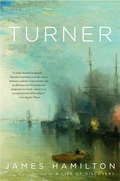- Table View
- List View
Tunney: Boxing's Brainiest Champ and His Upset of the Great Jack Dempsey
by Jack CavanaughAmong the legendary athletes of the 1920s, the unquestioned halcyon days of sports, stands Gene Tunney, the boxer who upset Jack Dempsey in spectacular fashion, notched a 77--1 record as a prizefighter, and later avenged his sole setback (to a fearless and highly unorthodox fighter named Harry Greb). Yet within a few years of retiring from the ring, Tunney willingly receded into the background, renouncing the image of jock celebrity that became the stock in trade of so many of his contemporaries. To this day, Gene Tunney's name is most often recognized only in conjunction with his epic "long count" second bout with Dempsey. In Tunney, the veteran journalist and author Jack Cavanaugh gives an account of the incomparable sporting milieu of the Roaring Twenties, centered around Gene Tunney and Jack Dempsey, the gladiators whose two titanic clashes transfixed a nation. Cavanaugh traces Tunney's life and career, taking us from the mean streets of Tunney's native Greenwich Village to the Greenwich, Connecticut, home of his only love, the heiress Polly Lauder; from Parris Island to Yale University; from Tunney learning fisticuffs as a skinny kid at the knee of his longshoreman father to his reign atop boxing's glamorous heavyweight division. Gene Tunney defied easy categorization, as a fighter and as a person. He was a sex symbol, a master of defensive boxing strategy, and the possessor of a powerful, and occasionally showy, intellect--qualities that prompted the great sportswriters of the golden age of sports to portray Tunney as "aloof." This intelligence would later serve him well in the corporate world, as CEO of several major companies and as a patron of the arts. And while the public craved reports of bad blood between Tunney and Dempsey, the pair were, in reality, respectful ring adversaries who in retirement grew to share a sincere lifelong friendship--with Dempsey even stumping for Tunney's son, John, during the younger Tunney's successful run for Congress. Tunney offers a unique perspective on sports, celebrity, and popular culture in the 1920s. But more than an exciting and insightful real-life tale, replete with heads of state, irrepressible showmen, mobsters, Hollywood luminaries, and the cream of New York society, Tunney is an irresistible story of an American underdog who forever changed the way fans look at their heroes.
Tupac (Superstars of Hip-Hop)
by Z. B. HillTupac Shakur was one of hip-hop's most important people. He may be gone today, but Tupac's music and messages live on. Few artists have the kind of effect on fans that Tupac had. Years after his death, hip-hop fans still listen to Tupac and remember the impact he had on hip-hop.Tupac tells the story of how Shakur started making music and became a megastar. Read about Tupac's amazing music career and his tragic death. Learn about how hip-hop would be very different without Tupac Shakur.
Tupac Shakur: The Authorized Biography
by Staci RobinsonThe authorized biography of the legendary artist, Tupac Shakur, a &“touching, empathetic portrait&” (The New York Times) of his life and powerful legacy, fully illustrated with photos, mementos, handwritten poetry, musings, and moreArtist, poet, actor, revolutionary, legendTupac Shakur is one of the greatest and most controversial artists of all time. More than a quarter of a century after his tragic death in 1996 at the age of just twenty-five, he continues to be one of the most misunderstood, complicated, and influential figures in modern history. Drawing on exclusive access to Tupac&’s private notebooks, letters, and uncensored conversations with those who loved and knew him best, this estate-authorized biography paints the fullest and most intimate picture to date of the young man who became a legend for generations to come.In Tupac Shakur, author and screenwriter Staci Robinson—who knew Tupac from their shared circle of high school friends in Marin City, California, and who was entrusted by his mother, Afeni Shakur, to share his story—unravels the myths and unpacks the complexities that have shadowed Tupac&’s existence. Decades in the making, this book pulls back the curtain to reveal a powerful story of a life defined by politics and art—a man driven by equal parts brilliance and impulsiveness, steeped in the rich intellectual tradition of Black empowerment, and unafraid to utter raw truths about race in America.It is a story of a mother and son bound together by a love for each other and for their people, and the relationship that endured through their darkest times. It is a political story that begins in the whirlwind of the 1960s civil rights movement and unfolds through a young artist&’s awakening to rage and purpose in the &’90s era of Rodney King. It is a story of dizzying success and its devastating consequences. And, of course, it is the story of Tupac&’s music, his timeless, undying message as it continues to touch and inspire us today.
Tupac Shakur: The Life and Times of an American Icon
by Tayannah Lee Mcquillar Fred L. JohnsonA passionate, critically incisive biography of one of the most influential rappers of all time, Tupac Shakur, and how he came to dominate hip-hop in the 1990s
Tupelo Man: The Life and Times of George McLean, a Most Peculiar Newspaper Publisher (Willie Morris Books in Memoir and Biography)
by Robert BladeIn 1924, George McLean, an Ole Miss sophomore and the spoiled son of a judge, attended a YMCA student mission conference whose free-thinking organizers aimed to change the world. They changed George McLean's. But not instantly. As vividly recounted in the first biography of this significant figure in southern history, Tupelo Man: The Life and Times of a Most Peculiar Newspaper Publisher, McLean drifted through schools and jobs, always questioning authority, always searching for a way to put his restless vision into practical use. In the Depression's depths, he was fired from a teaching job at what is now Rhodes College in Memphis, Tennessee, over his socialist ideas and labor organizing work. By 1934 he decided he had enough of working for others and that he would go into business for himself. In dirt-poor northeast Mississippi, the Tupelo Journal was for sale, and McLean used his wife's money to buy what he called “a bankrupt newspaper from a bankrupt bank.” As he struggled to keep the paper going, his Christian socialism evolved into a Christian capitalism that transformed the region. He didn't want a bigger slice of the pie for himself, he said; he wanted a bigger pie for all. But McLean (1904–1983) was far from a saint. He prayed about his temper, with little result. He was distant and aloof toward his two children—adopted through a notorious Memphis baby-selling operation. His wife, whom he deeply loved in his prickly way, left him once and threatened to leave again. “I don't know why I was born with this chip on my shoulder,” he told her. Tupelo Man looks at this far-from-ordinary publisher in an intimate way that offers a fascinating story and insight into our own lives and times.
Tuppence for Paper and String
by Brenda AshfordEach and every single one of the 100 plus children I have cared for over the past 62 years are very much in my heart.'It is 1945, the war is finally over and victory marches fill the streets of London. Brenda and her friends, happy that at long last the war is over, hope that they'll soon leave the days of rationing and worry behind. Before long Brenda's skills as a real life Mary Poppins are in demand again. Moving from house to house, Brenda never stays long, but just enough time to sprinkle a little magic and happiness.Word quickly spreads of this wonder nanny, who gets up to feed fretful babies in the middle of the night, who delivers quiet wisdom, and calmly restores order and happiness. Facing tragedy in her own life, Brenda never gives up on her quest to help the most troubled homes, changing hundreds of children's lives forever. TUPPENCE FOR PAPER AND STRING is a warm, uplifting and incredibly moving tale of a 1950s nanny, and her determination to give the children in her care the best possible start in life.
Turbulence: A True Story of Survival
by Annette HerfkensA riveting, inspirational true story of an incredibly resilient woman who broke professional barriers as a Dutch banker, was the sole survivor of Vietnam Airlines Flight 474, found love after the loss of her fiance, and continues to raise her autistic son, never wavering in her optimism.On the morning of November 14, 1992, Annette Herfkens, a top Dutch banker (and one of the few female international bond traders on Wall Street), packed her luggage for a romantic getaway with her longtime fiance, Willem. At 6:25 that morning, Annette and Willem boarded the plane out of Ho Chi Minh City, with twenty-three other passengers and six crew members, excited to finally have a vacation together. Six minutes before landing, flying at speed of 300 miles per hour, the plane lost altitude and crashed along a mountain ridge in the jungle of Vietnam. At first Annette heard the voices of other passengers, but soon they went quiet. Annette was the only survivor. For eight days she lay injured and alone, with only rainwater to sustain her. Presumed dead, her obituary made it into local newspapers. What followed is an incredible story of survival, mystery, and the endurance of spirit. Even after surviving and learning to cope with her harrowing experience, Annette's biggest life challenge began years later, when her son Maxi was diagnosed with autism. As she weathered the joys and challenges of raising Maxi, Annette often called upon the profound insights she learned during those eight days, viewing every turbulent event in her life with the unflinching optimism of a true survivor. This is an inspiring account of one woman's journey and perseverance, as a plane-crash survivor and even more so as a devoted mother to her autistic son, but also of discovering strength and beauty in unexpected places.
Turing's Cathedral
by George Dyson"It is possible to invent a single machine which can be used to compute any computable sequence," twenty-four-year-old Alan Turing announced in 1936. In Turing's Cathedral, George Dyson focuses on a small group of men and women, led by John von Neumann at the Institute for Advanced Study in Princeton, New Jersey, who built one of the first computers to realize Alan Turing's vision of a Universal Machine. Their work would break the distinction between numbers that mean things and numbers that do things--and our universe would never be the same. Using five kilobytes of memory (the amount allocated to displaying the cursor on a computer desktop of today), they achieved unprecedented success in both weather prediction and nuclear weapons design, while tackling, in their spare time, problems ranging from the evolution of viruses to the evolution of stars. Dyson's account, both historic and prophetic, sheds important new light on how the digital universe exploded in the aftermath of World War II. The proliferation of both codes and machines was paralleled by two historic developments: the decoding of self-replicating sequences in biology and the invention of the hydrogen bomb. It's no coincidence that the most destructive and the most constructive of human inventions appeared at exactly the same time. How did code take over the world? In retracing how Alan Turing's one-dimensional model became John von Neumann's two-dimensional implementation, Turing's Cathedral offers a series of provocative suggestions as to where the digital universe, now fully three-dimensional, may be heading next.
Turing's Legacy: Developments from Turing's Ideas in Logic
by Rod DowneyAlan Turing was an inspirational figure who is now recognised as a genius of modern mathematics. In addition to leading the Allied forces' code-breaking effort at Bletchley Park in World War II, he proposed the theoretical foundations of modern computing and anticipated developments in areas from information theory to computer chess. His ideas have been extraordinarily influential in modern mathematics and this book traces such developments by bringing together essays by leading experts in logic, artificial intelligence, computability theory and related areas. Together, they give insight into this fascinating man, the development of modern logic, and the history of ideas. The articles within cover a diverse selection of topics, such as the development of formal proof, differing views on the Church–Turing thesis, the development of combinatorial group theory, and Turing's work on randomness which foresaw the ideas of algorithmic randomness that would emerge many years later.
Turkey Hunting: A One Man Game
by Kenny Morgan William YarbroughTURKEY HUNTING, A ONE MAN GAME, by Ken Morgan, is a hardback, color edition (1987) that recalls a lifetime of hunting lessons. This turkey hunting book lays out some blueprints for all aspects of wild turkey hunting and sprinkles the reader with generous doses of facts. <p><p>The author has also included a memorization chart that details the best turkey calling sounds to make in each hunting circumstance, and the area of our attitudes and values in turkey hunting is addressed. In addition, the author's appealing storytelling style, as well as his well-founded observations and insights into wild turkey behavior and biology, make Kenny Morgan's book one that you will want to read again and again.
Turn Around Bright Eyes: The Rituals of Love & Karaoke
by Rob SheffieldOnce upon a time I was falling apart. Now I'm always falling in love.Pick up the microphone.When Rob Sheffield moved to New York City in the summer of 2001, he was a young widower trying to start a new life in a new town. Behind, in the past, was his life as a happily married rock critic, with a wife he adored, and a massive collection of mix tapes that captured their life together. And then, in a flash, all he had left were the tapes.Beyoncé , Bowie, Bon Jovi, Benatar . . .One night, some friends dragged him to a karaoke bar in the West Village. A night out was a rare occasion for Rob back then.Turn aroundSomehow, that night in a karaoke bar turned into many nights, in many karaoke bars. Karaoke became a way out, a way to escape the past, a way to be someone else if only for the span of a three-minute song. Discovering the sublime ridiculousness of karaoke, despite the fact that he couldn't carry a tune, he began to find his voice.Turn aroundAnd then the unexpected happened. A voice on the radio got Rob's attention. The voice came attached to a woman who was unlike anyone he'd ever met before. A woman who could name every constellation in the sky, and every Depeche Mode B side. A woman who could belt out a mean Bonnie Tyler.Bright EyesTurn Around Bright Eyes is an emotional journey of hilarity and heartbreak with a karaoke soundtrack. It's a story about finding the courage to move on, clearing your throat, and letting it rip. It's a story about navi- gating your way through adult romance. And it's a story about how songs get tangled up in our deepest emotions, evoking memories of the past while inspiring hope for the future.
Turn Here Sweet Corn: Organic Farming Works (A Fesler-Lampert Minnesota Heritage Book)
by Atina DiffleyWhen the hail starts to fall, Atina Diffley doesn&’t compare it to golf balls. She&’s a farmer. It&’s &“as big as a B-size potato.&” As her bombarded land turns white, she and her husband Martin huddle under a blanket and reminisce: the one-hundred-mile-per-hour winds; the eleven-inch rainfall (&“that broccoli turned out gorgeous&”); the hail disaster of 1977. The romance of farming washed away a long time ago, but the love? Never. In telling her story of working the land, coaxing good food from the fertile soil, Atina Diffley reminds us of an ultimate truth: we live in relationships—with the earth, plants and animals, families and communities. A memoir of making these essential relationships work in the face of challenges as natural as weather and as unnatural as corporate politics, her book is a firsthand history of getting in at the &“ground level&” of organic farming. One of the first certified organic produce farms in the Midwest, the Diffleys&’ Gardens of Eagan helped to usher in a new kind of green revolution in the heart of America&’s farmland, supplying their roadside stand and a growing number of local food co-ops. This is a story of a world transformed—and reclaimed—one square acre at a time.And yet, after surviving punishing storms and the devastating loss of fifth-generation Diffley family land to suburban development, the Diffleys faced the ultimate challenge: the threat of eminent domain for a crude oil pipeline proposed by one of the largest privately owned companies in the world, notorious polluters Koch Industries. As Atina Diffley tells her David-versus-Goliath tale, she gives readers everything from expert instruction in organic farming to an entrepreneur&’s manual on how to grow a business to a legal thriller about battling corporate arrogance to a love story about a single mother falling for a good, big-hearted man.
Turn Left At The Trojan Horse
by Brad Herzog"Turn Left at the Trojan Horse had me howling with laughter and nodding at the razor-sharp observation." --Tahir Shah, author of The Caliph's House"Go away. Figure it out," she was saying. "Don't come back until you do." She looked at the calendar. "You have thirty-one days."With these words, like Helen of Troy launching a thousand ships across the Aegean, Brad Herzog's wife launched a Winnebago Aspect onto the open road.A modern-day Odysseus in Kerouac clothing, Brad Herzog plunges into a solo cross-country search for insight. With middle age bearing down on him, he takes stock: How has he measured up to his own youthful aspirations? In contemporary America, what is a life well lived? What is a heroic life? From the foothills of Washington's Mount Olympus, through the forgotten corners of America, and finally to his college reunion in Ithaca, New York, Brad shares his personal odyssey. Stopping in classically named towns, he meets everyday heroes, including a teacher in a one-room schoolhouse in Troy, Oregon;a modern-day hobo in Iliad, Montana;and a bomb-squad soldier in Sparta, Wisconsin. These encounters and Brad's effortlessly infused musings make for an exciting, one-of-a-kind ride. "A truly epic journey."--A.J. Jacobs, author of The Year of Living Biblically"As we sit in Herzog's passenger seat, we cannot help but stare out the window and even see our own reflection in the glass."--Liz Robbins, author of A Race Like No OtherBrad Herzog lives on California's Monterey Peninsula with his wife and their two sons. He has been described as a "modern-day Steinbeck" and a "Picasso of the Winnebago," and Lonely Planet has ranked his travel memoirs among eight classics of the genre, along with books like Travels with Charley and On the Road. As an award-winning freelance writer, he has chronicled some of the nation's most unusual and intriguing subcultures, from nudists to North Pole explorers and from Pez collectors to pro mini golfers.
Turn Out the Lights: Chronicles of Texas During the 80s and 90s
by Gary CartwrightWhether the subject is Jack Ruby, Willie Nelson, or his own leukemia-stricken son Mark, when it comes to looking at the world through another person's eyes, nobody does it better than Gary Cartwright. For over twenty-five years, readers of Texas Monthly have relied on Cartwright to tell the stories behind the headlines with pull-no-punches honesty and wry humor. His reporting has told us not just what's happened over the last three decades in Texas, but, more importantly, what we've become as a result. This book collects seventeen of Cartwright's best Texas Monthly articles from the 1980s and 1990s, along with a new essay, "My Most Unforgettable Year," about the lasting legacy of the Kennedy assassination. He ranges widely in these pieces, from the reasons for his return to Texas after a New Mexican exile to profiles of Kris Kristofferson and Willie Nelson. Along the way, he strolls through San Antonio's historic King William District; attends a Dallas Cowboys old-timers reunion and the Holyfield vs. Foreman fight; visits the front lines of Texas' new range wars; gets inside the heads of murderers, gamblers, and revolutionaries; and debunks Viagra miracles, psychic surgery, and Kennedy conspiracy theories. In Cartwright's words, these pieces all record "the renewal of my Texas-ness, a rediscovery of Texas after returning home. " Gary Cartwright is a Senior Editor at Texas Monthly in Austin.
Turn Right at Machu Picchu: Rediscovering The Lost City One Step At A Time
by Mark AdamsWhat happens when an adventure travel expert-who's never actually done anything adventurous-tries to re-create the original expedition to Machu Picchu? <P><P>July 24, 1911, was a day for the history books. For on that rainy morning, the young Yale professor Hiram Bingham III climbed into the Andes Mountains of Peru and encountered an ancient city in the clouds: the now famous citadel of Machu Picchu. <P><P>Nearly a century later, news reports have recast the hero explorer as a villain who smuggled out priceless artifacts and stole credit for finding one of the world's greatest archaeological sites. <P><P>Mark Adams has spent his career editing adventure and travel magazines, so his plan to investigate the allegations against Bingham by retracing the explorer's perilous path to Machu Picchu isn't completely far- fetched, even if it does require him to sleep in a tent for the first time. <P><P>With a crusty, antisocial Australian survivalist and several Quechua-speaking, coca-chewing mule tenders as his guides, Adams takes readers through some of the most gorgeous and historic landscapes in Peru, from the ancient Inca capital of Cusco to the enigmatic ruins of Vitcos and Vilcabamba. <P><P>Along the way he finds a still-undiscovered country populated with brilliant and eccentric characters, as well as an answer to the question that has nagged scientists since Hiram Bingham's time: Just what was Machu Picchu?
Turn the Ship Around!
by David Marquet"Leadership should mean giving control rather than taking control and creating leaders rather than forging followers. ” David Marquet, an experienced Navy officer, was used to giving orders. As newly appointed captain of the USS Santa Fe, a nuclear-powered submarine, he was responsible for more than a hundred sailors, deep in the sea. In this high-stress environment, where there is no margin for error, it was crucial his men did their job and did it well. But the ship was dogged by poor morale, poor performance, and the worst retention in the fleet. Marquet acted like any other captain until, one day, he unknowingly gave an impossible order, and his crew tried to follow it anyway. When he asked why the order wasn’t challenged, the answer was "Because you told me to. ” Marquet realized he was leading in a culture of followers, and they were all in danger unless they fundamentally changed the way they did things. That’s when Marquet took matters into his own hands and pushed for leadership at every level. Turn the Ship Around! is the true story of how the Santa Fe skyrocketed from worst to first in the fleet by challenging the U. S. Navy’s traditional leader-follower approach. Struggling against his own instincts to take control, he instead achieved the vastly more powerful model of giving control. Before long, each member of Marquet’s crew became a leader and assumed responsibility for everything he did, from clerical tasks to crucial combat decisions. The crew became fully engaged, contributing their full intellectual capacity every day, and the Santa Fe started winning awards and promoting a highly disproportionate number of officers to submarine command. No matter your business or position, you can apply Marquet’s radical guidelines to turn your own ship around. The payoff: a workplace where everyone around you is taking responsibility for their actions, where people are healthier and happier, where everyone is a leader. .
Turn the Ship Around!
by David Marquet"Leadership should mean giving control rather than taking control and creating leaders rather than forging followers." David Marquet, an experienced Navy officer, was used to giving orders. As newly appointed captain of the USS Santa Fe, a nuclear-powered submarine, he was responsible for more than a hundred sailors, deep in the sea. In this high-stress environment, where there is no margin for error, it was crucial his men did their job and did it well. But the ship was dogged by poor morale, poor performance, and the worst retention in the fleet. Marquet acted like any other captain until, one day, he unknowingly gave an impossible order, and his crew tried to follow it anyway. When he asked why the order wasn't challenged, the answer was "Because you told me to." Marquet realized he was leading in a culture of followers, and they were all in danger unless they fundamentally changed the way they did things. That's when Marquet took matters into his own hands and pushed for leadership at every level. Turn the Ship Around! is the true story of how the Santa Fe skyrocketed from worst to first in the fleet by challenging the U.S. Navy's traditional leader-follower approach. Struggling against his own instincts to take control, he instead achieved the vastly more powerful model of giving control. Before long, each member of Marquet's crew became a leader and assumed responsibility for everything he did, from clerical tasks to crucial combat decisions. The crew became fully engaged, contributing their full intellectual capacity every day, and the Santa Fe started winning awards and promoting a highly disproportionate number of officers to submarine command. No matter your business or position, you can apply Marquet's radical guidelines to turn your own ship around. The payoff: a workplace where everyone around you is taking responsibility for their actions, where people are healthier and happier, where everyone is a leader.
Turn the Ship Around!: A True Story of Turning Followers into Leaders
by Stephen R. Covey L. David MarquetSince Turn the Ship Around! was published in 2012, hundreds of thousands of readers have been inspired by former Navy captain David Marquet’s true story. Many have applied his insights to their own organizations, creating workplaces where everyone takes responsibility for his or her actions, where followers grow to become leaders, and where happier teams drive dramatically better results. Marquet was a Naval Academy graduate and an experienced officer when selected for submarine command. Trained to give orders in the traditional model of leadership, he faced a new wrinkle when he was shifted to the Santa Fe, a nuclear powered submarine, at the last minute. Facing the high-stress environment of a sub where there’s little margin for error, he was determined to reverse the trends he found: poor morale, poor performance, and the worst retention rate in the fleet, on board a submarine he didn't know. Almost immediately, Marquet ran into trouble when he unknowingly gave an impossible order, and his crew tried to follow it anyway. When he asked why the order wasn’t challenged, the answer was “Because you told me to.” Marquet realized that while he was trained for a different submarine, his crew had been trained to do what they were told -- a deadly combination.That’s when Marquet flipped the leadership model and pushed for leadership at every level. Turn the Ship Around! reveals how the Santa Fe skyrocketed from worst to first in the fleet by challenging the U.S. Navy’s traditional leader-follower approach. Struggling against his own instincts to take control, he instead achieved the vastly more powerful model of giving control to his subordinates. Before long, each member of Marquet’s crew became a leader and assumed responsibility for everything he did, from clerical tasks to crucial combat decisions. The crew became fully engaged, contributing their full intellectual capacity every day. The Santa Fe set records for performance, morale, and retention. Over the next decade, the officers of the Santa Fe were selected to become submarine commanders in highly disproportionate numbers. Whether you need a major change of course or just a tweak of the rudder, you can apply Marquet’s methods to turn your own ship around.
Turn-of-the-Century Photographs from San Diego, Texas
by Ana Carolina Castillo Crimm Sara R. MasseySituated in the South Texas borderlands some fifty miles west of Corpus Christi, San Diego was a thriving town already a hundred years old at the turn of the twentieth century. With a population that was 90 percent Mexican or Mexican American and 10 percent Anglo, the bicultural community was the seat of Duval County and a prosperous town of lumberyards, banks, mercantile stores, and cotton gins, which also supplied the needs of area ranchers and farmers. Though Anglos dominated its economic and political life, San Diego was culturally Mexican, and Mexican Americans as well as Anglos built successful businesses and made fortunes. This collection of nearly one hundred photographs from the estate of amateur photographer William Hoffman captures the cosmopolitan town of San Diego at a vibrant moment in its history between 1898 and 1909. Grouped into the categories women and their jobs, local homes, men and their businesses, children at school and church, families and friends, and entertainment about town, the photos offer an immediate visual understanding of the cultural and economic life of the community, enhanced by detailed captions that identify the subjects and circumstances of the photos. An introductory historical chapter constitutes the first published history of Duval County, which was one of the most important areas of South Texas in the early twentieth century.
Turnabout Children: Overcoming Dyslexia and Other Learning Disabilities
by Mary MaccrackenAfter receiving her masters degree in special education, the author decides to go into private practice as a learning-disabilities specialist. In this book, she tells of five of the children she worked with, and the techniques she used to help each child overcome his or her unique set of difficulties.
Turnaround Time: Uniting an Airline and Its Employees in the Friendly Skies
by Oscar Munoz Brian DeSplinterGo behind the scenes with the CEO who led United Airlines’ remarkable turnaround. Around the world and around the clock, the people of United Airlines are locked in a struggle against time to ensure your aircraft lands and takes off for another flight safely and efficiently. This “turnaround time” is the heartbeat of an industry in which the margin for error is nil and success is measured by fractions of a second.Turning around an aircraft and turning around an airline are very different challenges in most respects, except one: it takes a united team to perform it well.In 2015, when Oscar Munoz took the helm of this iconic brand, its culture was anything but united and its reputation was in free fall. A merger with its onetime rival Continental had stalled, operational and financial performance was badly trailing those of its competitors, and the bonds of trust with shareholders, customers, and employees had reached a breaking point.Setting out an ambitious plan to rejuvenate the company, Oscar learned that there was nothing wrong at United that couldn’t be fixed by championing what was right—the employees themselves.Meanwhile, only a month into the job, Oscar suffered a near-fatal heart attack that set in motion a race against the clock to find a heart transplant to save his life, even as he fought to salvage his vision for United’s revival. The health emergency might have been the end of the story—until employees and union leaders rallied around Oscar, inspiring him to pull through, something he did within weeks following a successful procedure.Oscar and the people he led, both with new leases on life, would go on to weather more turbulence, overcoming battles with investors and navigating several PR crises—including a global pandemic—to deliver top-tier operational performance, strong returns to shareholders, and ascending levels of customer satisfaction. By the end of his tenure, the people of United were finally flying together as one team, defying pessimism from industry insiders and rekindling optimism from employees and the customers they served.With candor, humor, and heartfelt wisdom, Oscar reveals how he rose from humble immigrant origins to lead United Airlines through one of modern business’s greatest corporate turnarounds. He offers soulful, much-needed leadership lessons for today’s world: listening with empathy, standing up for employees, building durable cultures that are profitable because they’re principled, and advancing a vision for a genuinely inclusive economy for the future.
Turnaround: Crisis, Leadership, and the Olympic Games
by Mitt Romney Timothy RobinsonMitt Romney, Governor of Massachusetts, built a career turning around troubled companies. As the CEO of Bain Capital and Bain & Company, he and his firm helped propel the success of hundreds of companies, from venture start-ups to the world's largest corporations. In 1999, the Salt Lake Winter Olympic Games Organizing Committee turned to him to take over and run the Salt Lake Olympic Games. Romney was reluctant--and with good reason.Sullied by scandal, on the brink of financial disaster, and with federal investigators, bankers, and the press at its door, the Salt Lake Organizing Committee's senior managers admitted the organization was paralyzed.But Romney had too much American patriotism to let it become a catastrophe for his country. So he accepted the biggest turnaround challenge of his life.In Turnaround, Romney reveals how he tackled the seemingly insurmountable obstacles facing the Salt Lake Winter Games. In Turnaround, you'll learn how Romney and his management team: eliminated a financial crisis and delivered a profitable Olympic Gamesbuilt a culture of excellence that inspired gold medal performances from the employeesskillfully won the support of government officials, corporate sponsors, local residents, athletes and the international Olympic movement.With Romney at the helm, and through the teamwork, tenacity, and creativity of the staff he assembled and supported, the organizing committee succeeded against the odds in producing one of the finest Olympic Games ever--a proud moment for America, a great installment in Olympic history, and a valuable object lesson in what effective management and leadership can do.
Turnaround: How America's Top Cop Reversed The Crime Epidemic
by William Bratton Peter KnoblerWhen Bill Bratton was sworn in as New York City's police commissioner in 1994, he made what many considered a bold promise: The NYPD would fight crime in every borough. . . and win. It seemed foolhardy; even everybody knows you can't win the war on crime. But Bratton delivered. In an extraordinary twenty-seven months, serious crime in New York City went down by 33 percent, the murder rate was cut in half--and Bill Bratton was heralded as the most charismatic and respected law enforcement official in America. . In this outspoken account of his news-making career, Bratton reveals how his cutting-edge policing strategies brought about the historic reduction in crime. Bratton's success made national news and landed him on the cover ofTime. It also landed him in political hot water. Bratton earned such positive press that before he'd completed his first week on the job, the administration of New York's media-hungry mayor Rudolph Giuliani, threatened to fire him. Bratton gives a vivid, behind-the-scenes look at the sizzle and substance, and he pulls no punches describing the personalities whoreallyrun the city. Bratton grew up in a working-class Boston neighborhood, always dreaming of being a cop. As a young officer under Robert di Grazia, Boston's progressive police commissioner, he got a ground-level view of real police reform and also saw what happens when an outspoken, dynamic, reform-minded police commissioner starts to outshine an ambitious mayor. He was soon in the forefront of the community policing movement and a rising star in the profession. Bratton had turned around four major police departments when he accepted the number one police job in America. When Bratton arrived at the NYPD, New York's Finest were almost hiding; they had given up on preventing crime and were trying only to respond to it. Narcotics, Vice, Auto Theft, and the Gun Squads all worked banker's hours while the competition--the bad guys--worked around the clock. Bratton changed that. He brought talent to the top and instilled pride in the force; he listened to the people in the neighborhoods and to the cops on the street. Bratton and his "dream team" created Compstat, a combination of computer statistics analysis and an unwavering demand for accountability. Cops were called on the carpet, and crime began to drop. With Bratton on the job, New York City was turned around. Today, New York's plummeting crime rate and improved quality of life remain a national success story. Bratton is directly responsible, and his strategies are being studied and implemented by police forces across the country and around the world. InTurnaround, Bratton shows how the war on crime can be won once and for all.
Turncoat: Benedict Arnold and the Crisis of American Liberty
by Stephen BrumwellA historian examines how a once-ardent hero of the American Revolutionary cause became its most dishonored traitor. General Benedict Arnold&’s failed attempt to betray the fortress of West Point to the British in 1780 stands as one of the most infamous episodes in American history. In the light of a shining record of bravery and unquestioned commitment to the Revolution, Arnold&’s defection came as an appalling shock. Contemporaries believed he had been corrupted by greed; historians have theorized that he had come to resent the lack of recognition for his merits and sacrifices. In this provocative book Stephen Brumwell challenges such interpretations and draws on unexplored archives to reveal other crucial factors that illuminate Arnold&’s abandonment of the revolutionary cause he once championed. This work traces Arnold&’s journey from enthusiastic support of American independence to his spectacularly traitorous acts and narrow escape. Brumwell&’s research leads to an unexpected conclusion: Arnold&’s mystifying betrayal was driven by a staunch conviction that America&’s best interests would be served by halting the bloodshed and reuniting the fractured British Empire. &“Gripping… In a time when charges of treason and disloyalty intrude into our daily politics, Turncoat is essential reading.&”—R. R. B. Bernstein, City College of New York &“The most balanced and insightful assessment of Benedict Arnold to date. Utilizing fresh manuscript sources, Brumwell reasserts the crucial importance of human agency in history.&”—Edward G. Lengel, author of General George Washington &“An incisive study of the war and the very meaning of the American Revolution itself…. The defining portrait of Arnold for the twenty-first century.&”—Francis D. Cogliano, author of Revolutionary America
Turner
by James HamiltonJ. M. W. Turner was a painter whose treatment of light put him squarely in the pantheon of the world's preeminent artists, but his character was a tangle of fascinating contradictions. While he could be coarse and rude, manipulative, ill-mannered, and inarticulate, he was also generous, questioning, and humane, and he displayed through his work a hitherto unrecognized optimism about the course of human progress. With two illegitimate daughters and several mistresses whom Turner made a career of not including in his public life, the painter was also known for his entrepreneurial cunning, demanding and receiving the highest prices for his work. Over the course of sixty years, Turner traveled thousands of miles to seek out the landscapes of England and Europe. He was drawn overwhelmingly to coasts, to the electrifying rub of the land with the sea, and he regularly observed their union from the cliff, the beach, the pier, or from a small boat. Fueled by his prodigious talent, Turner revealed to himself and others the personality of the British and European landscapes and the moods of the surrounding seas. He kept no diary, but his many sketchbooks are intensely autobiographical, giving clues to his techniques, his itineraries, his income and expenditures, and his struggle to master the theories of perspective. In Turner, James Hamilton takes advantage of new material discovered since the 1975 bicentennial celebration of the artist's birth, paying particular attention to the diary of sketches with which Turner narrated his life. Hamilton's textured portrait is fully complemented by a sixteen-page illustrations insert, including many color reproductions of Turner's most famous landscape paintings. Seamlessly blending vibrant biography with astute art criticism, Hamilton writes with energy, style, and erudition to address the contradictions of this great artist. From the Hardcover edition.
